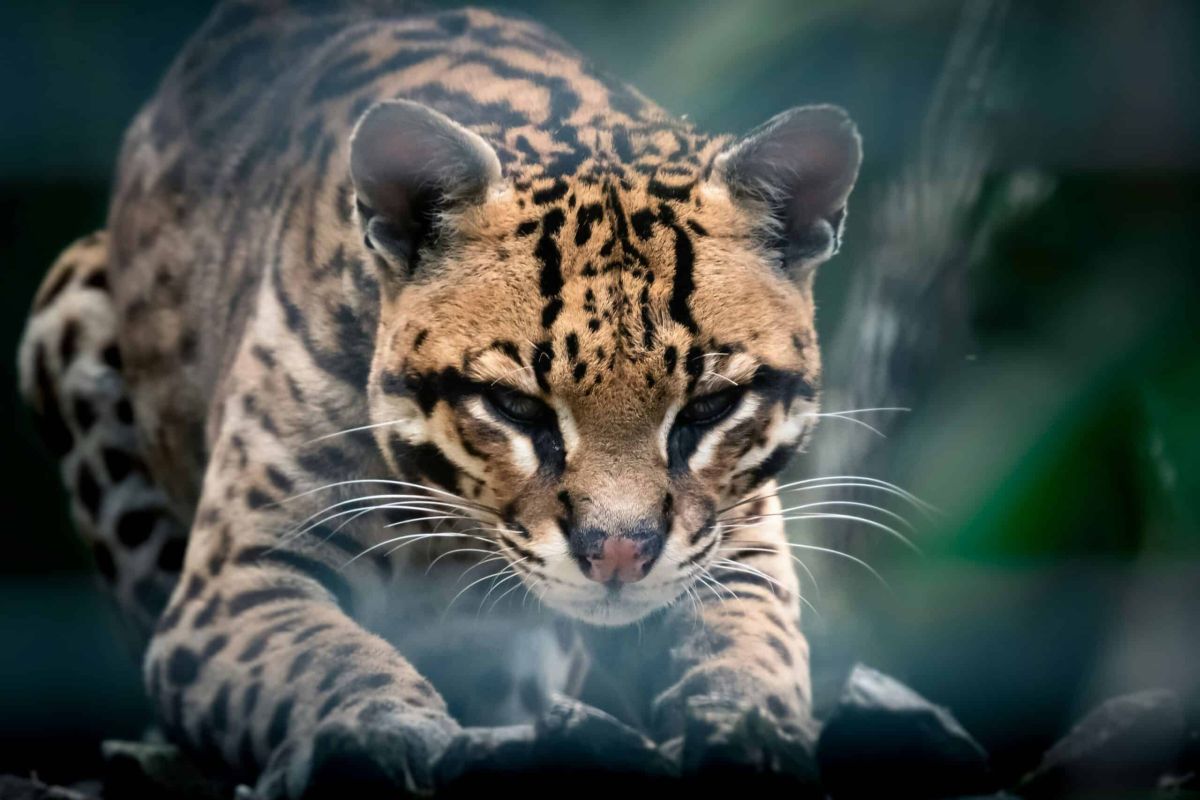The Ocelot: Nature’s Most Beautiful Wild Cats

Ocelots, scientifically known as Leopardus pardalis, are small to medium-sized wild cats native to South America, Central America, and parts of the southern United States. Renowned for their striking appearance and elusive nature, ocelots inhabit a diverse range of environments, from tropical rainforests to grasslands.
Physical Characteristics
Ocelots are easily recognizable by their attractive coats, which feature a mix of golden to grayish fur adorned with distinctive black spots and rosettes. An average adult ocelot weighs between 18 to 35 pounds and measures about 24 to 39 inches in body length, with a tail adding an additional 10 to 16 inches. Their large, rounded ears and vivid green or hazel eyes contribute to their captivating appearance, while their slender bodies make them agile hunters.
Unlike many larger felines, ocelots possess retractable claws and keen senses of sight and hearing, enabling them to be effective nocturnal hunters. Their distinctive markings provide excellent camouflage in their native habitats, allowing them to blend seamlessly into the leafy undergrowth and shadows.
Habitat and Distribution
Ocelots are adaptable creatures, thriving in a variety of environments including tropical rainforests, savannas, marshes, scrublands, and even suburban areas. Their preferred habitats are dense vegetation where they can find cover for hunting and nesting. Throughout their range, which extends from the southern United States to Argentina, ocelots exhibit a notable ability to survive in fragmented habitats, although they are more commonly found in regions with abundant tree cover.
Behavior and Diet
Ocelots are solitary animals, primarily active during the twilight hours of dawn and dusk (crepuscular). They establish territories that they mark with scent, vocalizations, and scratches on trees. These territories can vary in size depending on the availability of prey and environmental conditions.
As carnivores, ocelots primarily feed on small mammals, birds, reptiles, and amphibians. Their diet is highly adaptable, with the composition of their meals influenced by the local prey availability. Ocelots are skilled hunters, utilizing stealth and agility to stalk and ambush their prey, employing a combination of pouncing and clawing to capture and subdue it.
Reproduction and Lifespan
Breeding occurs year-round, but may peak during specific seasons depending on geographical location. After a gestation period of approximately 70 to 80 days, females give birth to a litter of one to four kittens. These kittens are born blind and rely heavily on their mother for survival during their early months. They begin to explore their surroundings and learn to hunt at about two months of age and remain with their mother until they are around 10 months old.
In the wild, ocelots can live up to 10 years, but in captivity, they may reach ages of 15 years or more due to the absence of predation and a controlled diet.
Conservation Status
Despite their stunning appearance, ocelots are classified as a species of “Least Concern” by the International Union for Conservation of Nature (IUCN). However, they face numerous threats that put their populations at risk. Habitat loss due to deforestation, urban development, and agriculture is a primary concern, significantly reducing their natural habitat. Additionally, fragmentation of their environments makes it difficult for ocelots to access territories for hunting and breeding.
Illegal hunting and poaching also pose significant threats to ocelot populations, driven by the exotic pet trade and demand for their beautiful pelts. Conservation efforts are gradually being implemented to safeguard ocelots’ habitats and encourage local communities to engage in protective measures.
Conclusion
Ocelots are magnificent felines that play a vital role in their ecosystems. Their unique adaptations and striking beauty make them a symbol of biodiversity in the regions they inhabit. As we continue to witness the consequences of habitat destruction and climate change, it becomes increasingly vital to prioritize the conservation of not just the ocelots themselves but also the rich ecosystems they depend on. Through education, awareness, and dedicated conservation efforts, we can ensure that future generations will continue to marvel at these captivating wild cats.



